
Visualizing the architecture of a leaf
The way leaves and branches grow can reveal a lot about plants. How effective are they at transporting nutrients? Can they recover from harsh conditions? Are they resistant to damage?
For Benjamin Blonder, an assistant professor in the Department of Environmental Science, Policy, and Management, the answer to these questions lies below the surface of the leaf. Visualizing the architecture of a leaf’s veins—whether they branch out or loop, and how larger pathways break out into smaller pathways—is central to understanding a plant’s needs and functions.
There is currently limited data linking the form of vein networks to a leaf’s underlying functions, a knowledge gap Blonder and researchers in his Macrosystems Ecology Laboratory hope to fill. According to Blonder, a better understanding of the rules and tradeoffs governing vein network architecture will provide insights into plant evolution and could one day guide the design of more efficient roads, drainage systems, or synthetic organs.
In November 2021, Rausser College photographer Adam Sings in the Timber documented Blonder and Mickey Boakye, a graduate student and member of Blonder’s research team, as they collected samples at the UC Botanical Garden. In addition to housing more than 10,000 plant species, the Botanical Garden routinely partners with researchers to provide plant material or access to on-site facilities like greenhouses.

The lab’s work begins by selecting species that represent a wide range of forms and functions, to best represent the full tree of life. Blonder and his team list the plants by their evolutionary distinctiveness and ultimately narrow them down to specific species. Once that process is complete, Boakye and other members of the research team locate the plants and take samples. In the image on top, Boakye (left) and Blonder (right) examine plant species in the Botanical Garden. They collect multiple stems after identifying a fern in the image on the bottom.

When choosing which sample to examine, Boakye says, the researchers prioritize healthy, mature leaves free from blemishes and damage to ensure uniformity across samples. They are placed in a bucket of water to ensure that they do not dehydrate on the trip back to the lab. “We want them to feel like they’re still attached to the mother plant,” Boakye said.
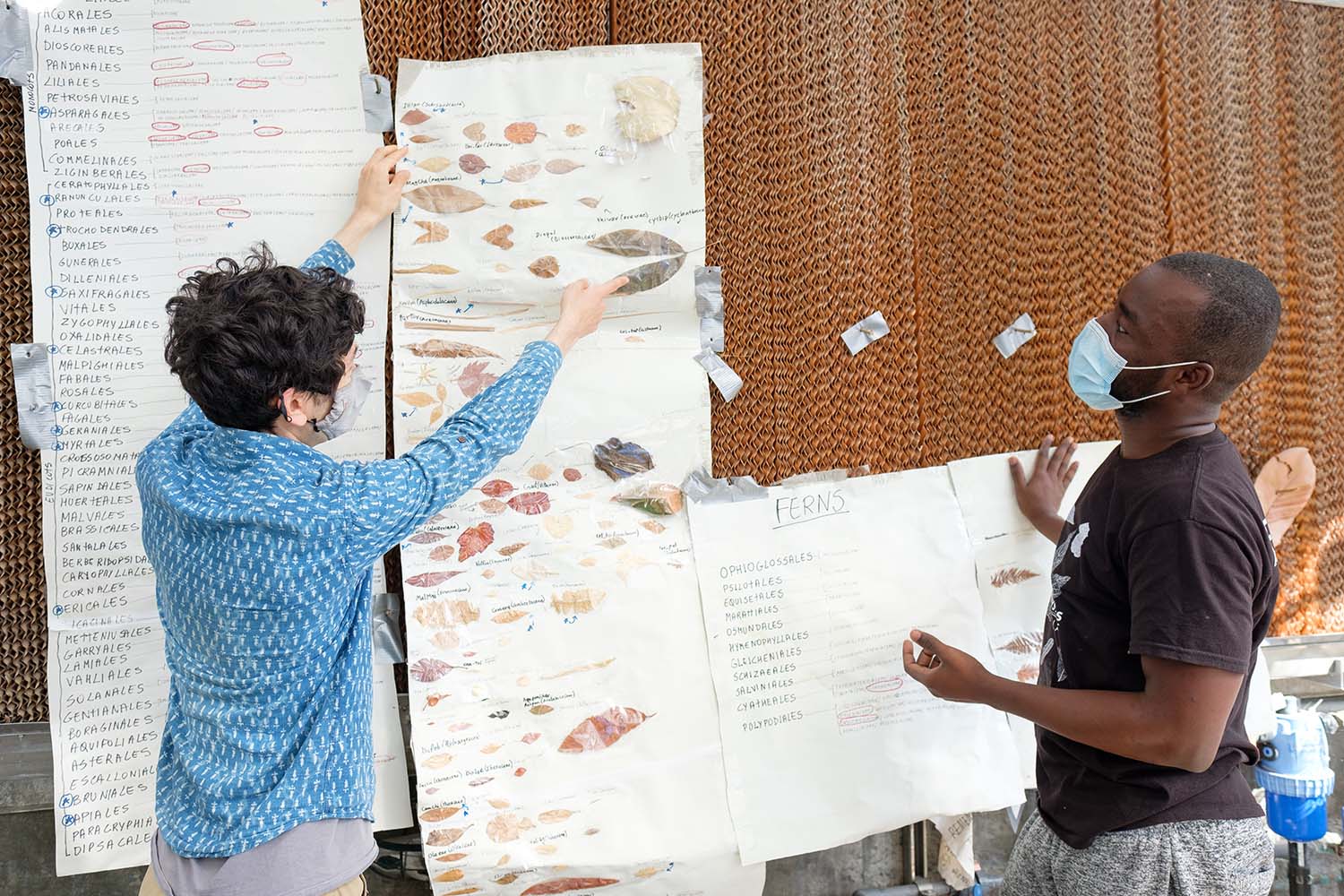
The research team worked out of a greenhouse in the Botanical Garden (pictured) while conducting the project. They use a low-tech paper system (and computer databases) to organize and track the plant species they have collected, as well as to visualize the leaf shape and plant morphology. New samples brought from the botanical garden are recut in water and then left to rehydrate overnight to ensure that they are stable before further experiments on leaf functioning are conducted.
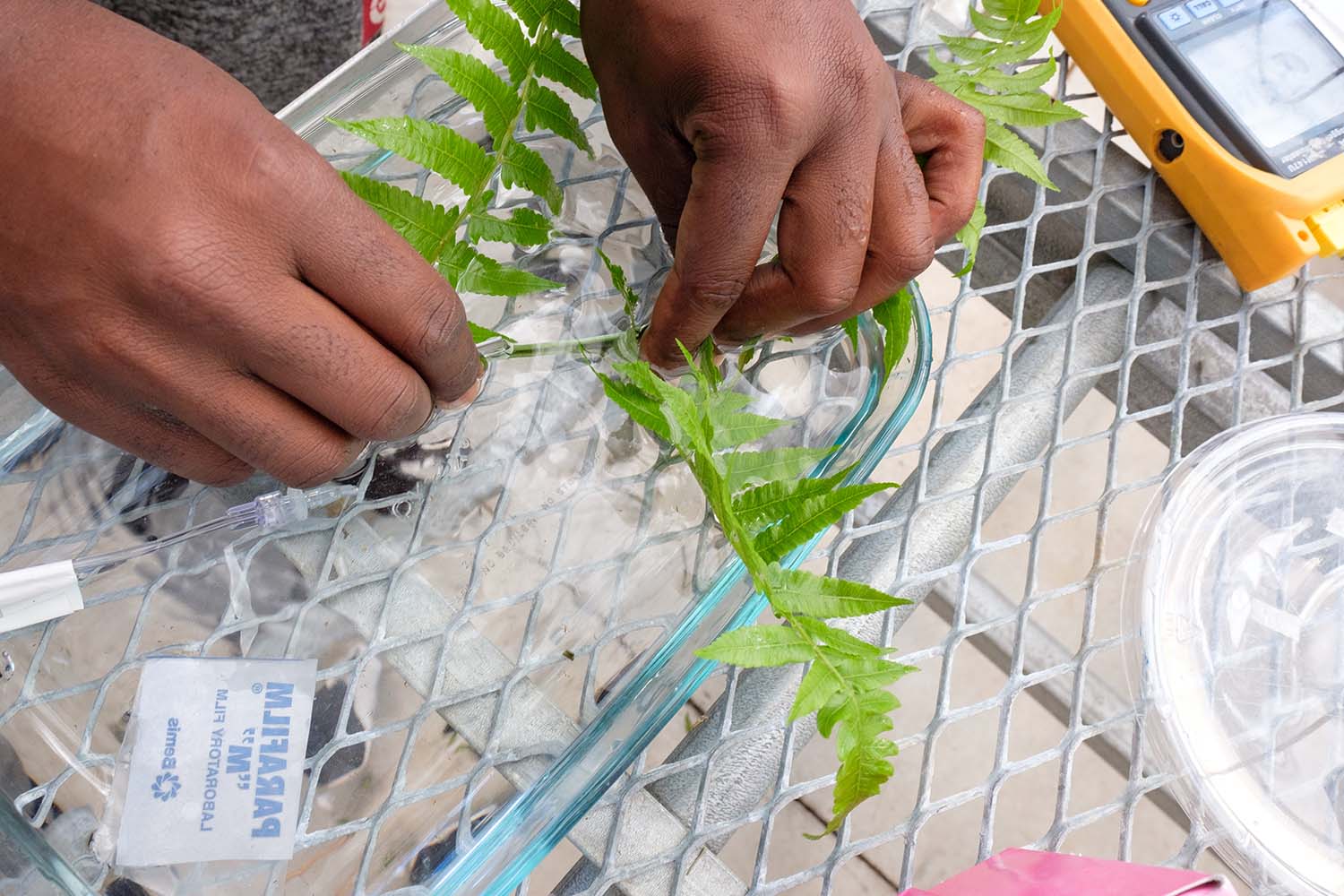
Stem samples have to be carefully prepared to ensure accurate results on the tests Boakye runs to measure the efficiency of each leaf venation network for water flow. The clippings are transferred from the bucket to a shallow pyrex dish filled with water. Once there, Boakye must carefully clip a leaf from the stem and insert it into silicon tubing filled with degassed water.
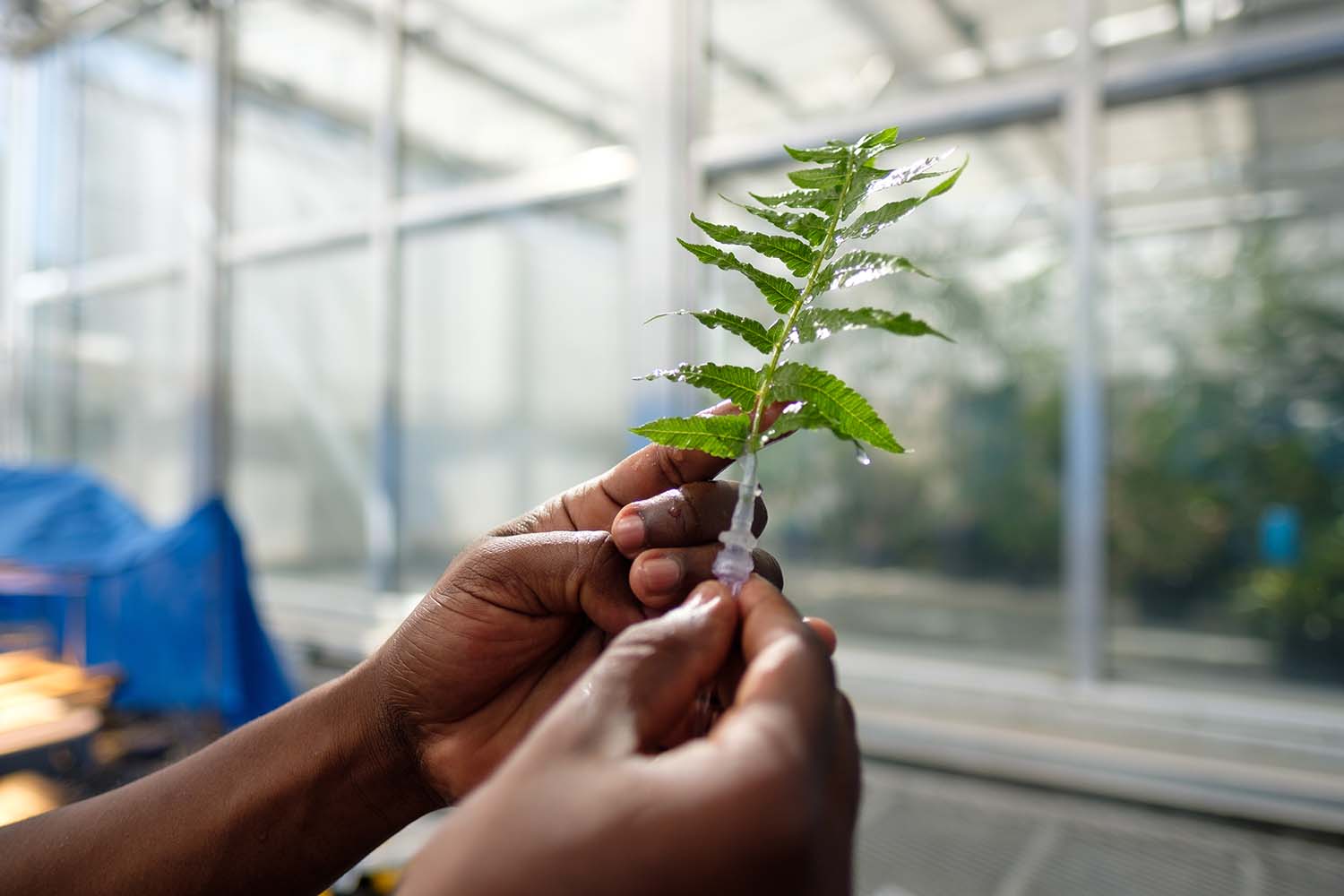
All of the preparation occurs underwater, according to Boakye, to ensure that air bubbles are not accidentally introduced to the leaf’s vein networks. The tubing must be airtight when the sample is inserted and must be done before measuring the flow rate of water across the leaf.

Here, Boakye determines the leaf’s hydraulic traits by testing its flow rate, a measure of how much fluid (in this case, water) passes through the leaf over a given amount of time. The researchers place the leaf samples on top of a box fan and underneath a light source—a setup that mimics real-world conditions for photosynthesis—while measuring how much water is drawn in by the leaf.

Leaf samples are allowed to equilibrate in a bag for 20 minutes after running the flow rate experiment. Once stabilized, Boakye places the sample into a pressure chamber to measure its water potential. “The idea here is to see the amount of pressure it takes to pull water out of the leaf,” he said. “You stop when you begin to see bubbles escape out of the leaf petiole.”
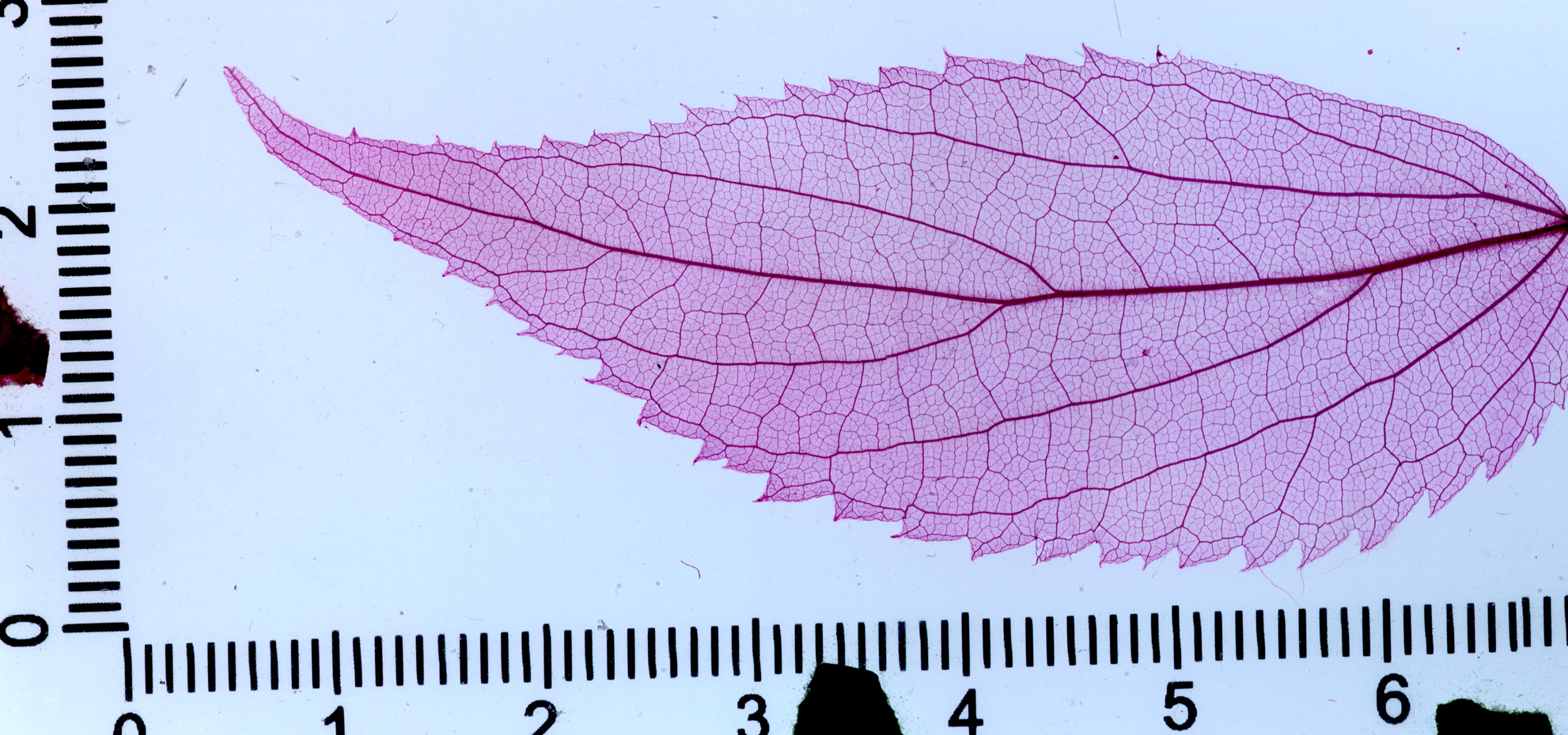
After testing its “hydraulic conductivity” by measuring the flow rate and water pressure, the leaf is chemically dyed to better highlight its vein network. The visualization (pictured above) helps Blonder and his team link form and function for a comprehensive evaluation of the leaf. “One hypothesis is that networks that have greater efficiency—more conductivity—might also have a tradeoff with lower resilience—a loss of flow after damage—because of how the network is laid out,” Blonder said. He compared the phenomenon to a traffic jam: congestion on the highway may cause congestion elsewhere depending on how the roads are connected.
Botanical Entanglements
[iframe caption]
To bring the Blonder lab’s work to a wider audience, artist-scientist Juniper Harrower, BS ’06 Genetics & Plant Biology, created art based on their research and findings, as well as her interactions with members of Blonder’s lab. Harrower has a PhD in environmental studies with a focus in ecoart from UC Santa Cruz in 2019 and is a first-year master’s student in the Department of Art Practice at UC Berkeley.
Her exhibit, Botanical Entanglements, explored the role that plants play in constructing our identities and how our activities influence and shape their development.
A closing ceremony featuring lectures by Blonder and Harrower, and a performance by composer Marcus Norris and the South Side Symphony, was held March 18 at the UC Botanical Garden. Norris, who is pursuing his PhD in music composition at UCLA and is an inaugural composer-in-residence with the Chicago Philharmonic, debuted a new cello concerto that explores themes of resilience in human communities via inspiration from plants.
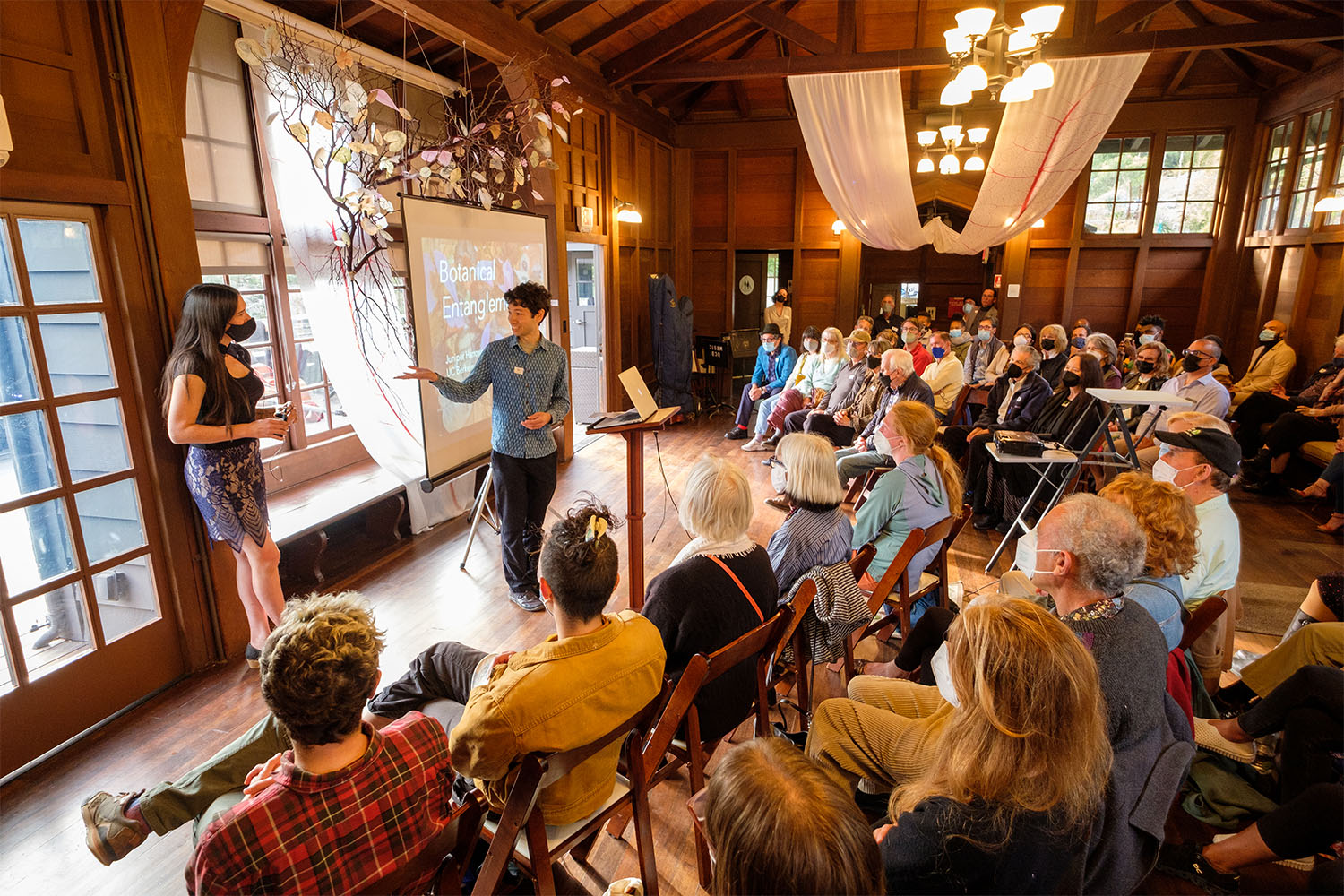
Assistant Professor Benjamin Blonder introduces Juniper Harrower during a closing ceremony for the Botanical Entanglements exhibition at the UC Botanical Garden. The artwork Harrower created for the exhibition was inspired by the research and her interactions with Blonder’s lab.
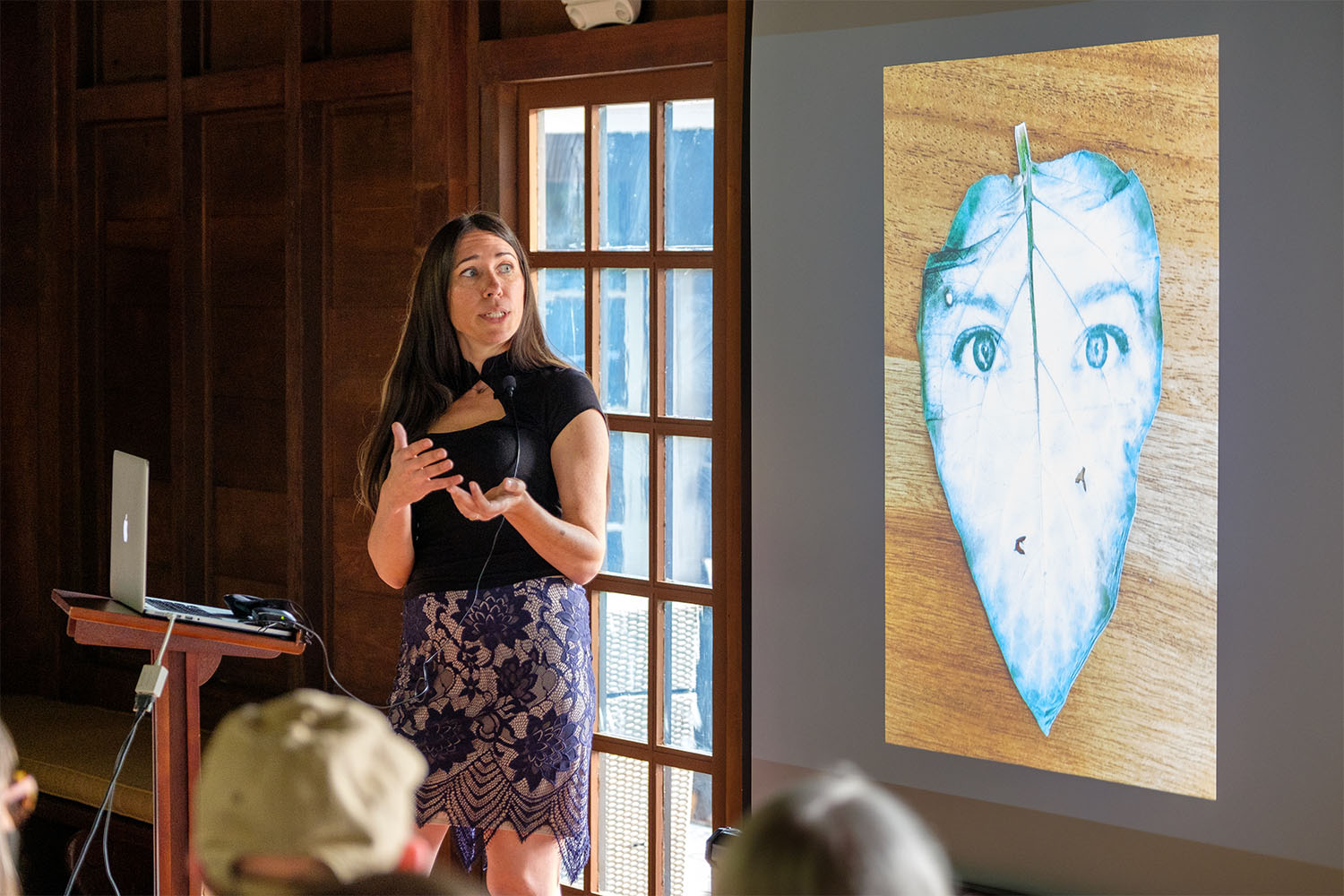
Artist-scientist Juniper Harrower speaks to audience members about her Botanical Entanglements exhibition. Displayed on a projector is an art piece Harrower created by printing eyes onto a leaf using sunlight and phytochemistry.
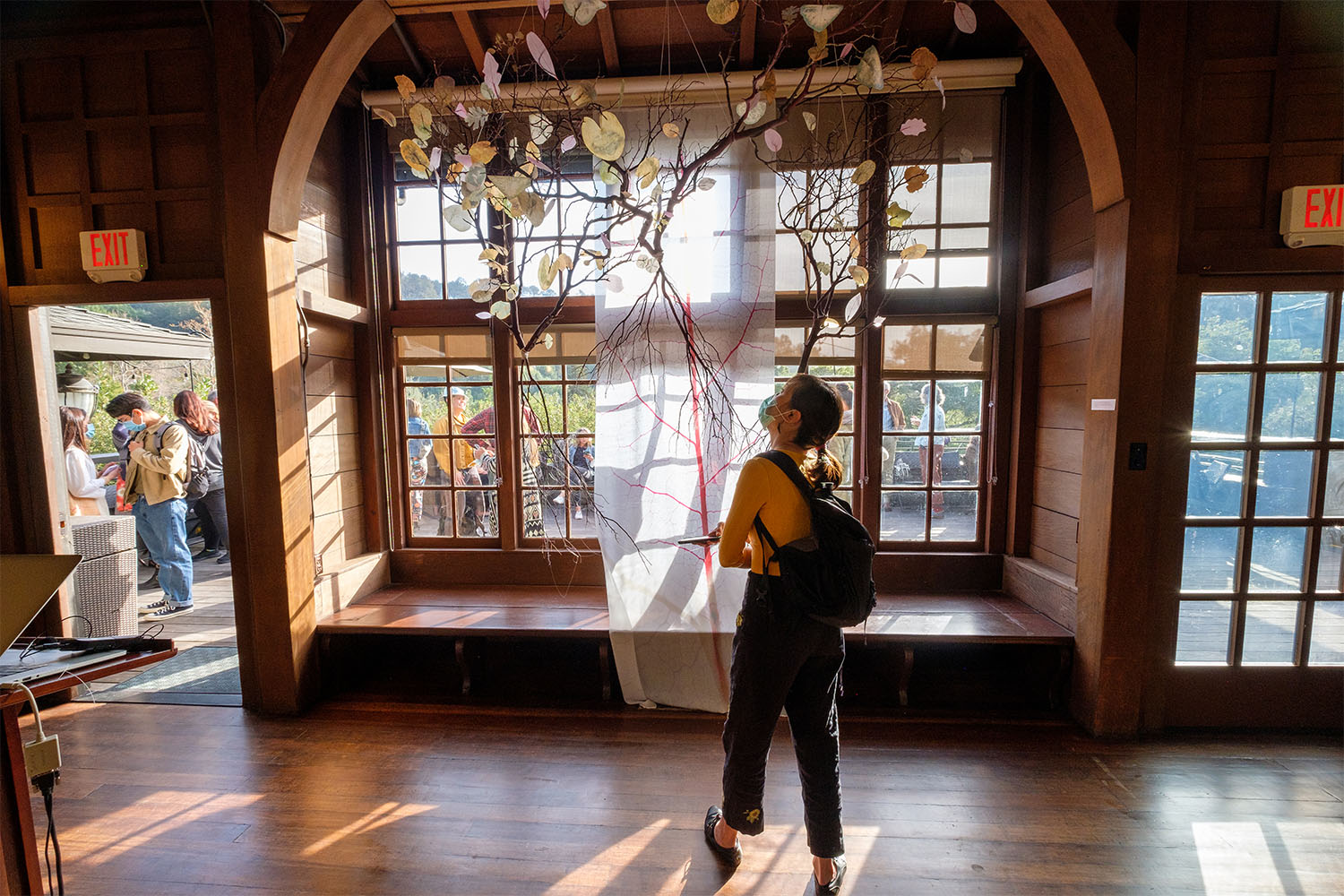
An attendee admires one of Harrower’s art pieces—a long tapestry with a print of leaf veins, and a tree with printed leaves—during the closing ceremony.

Details of one of Harrower’s art pieces showcased during the Botanical Entanglements exhibition.
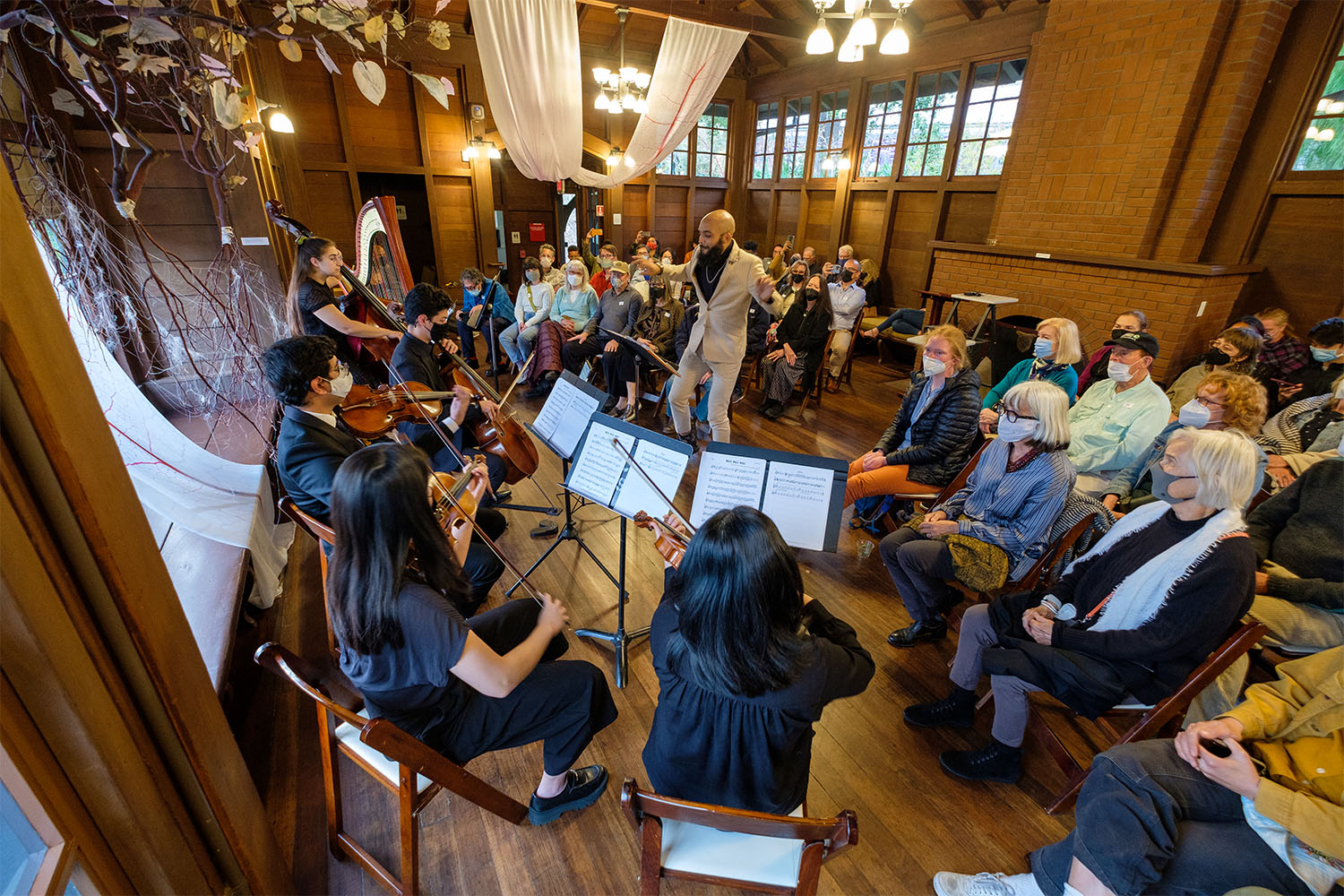
Marcus Norris conducts the South Side Symphony during the closing ceremony for the Botanical Entanglements exhibition at the UC Botanical Garden.
